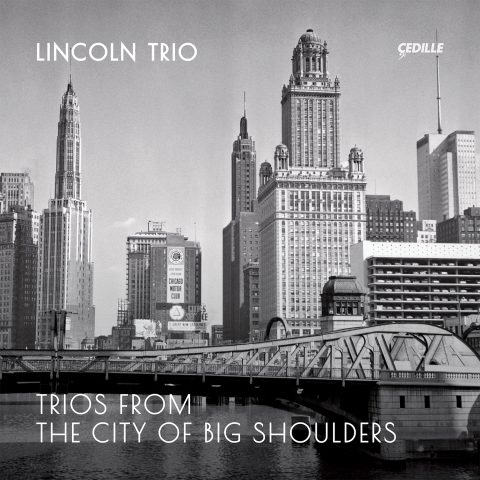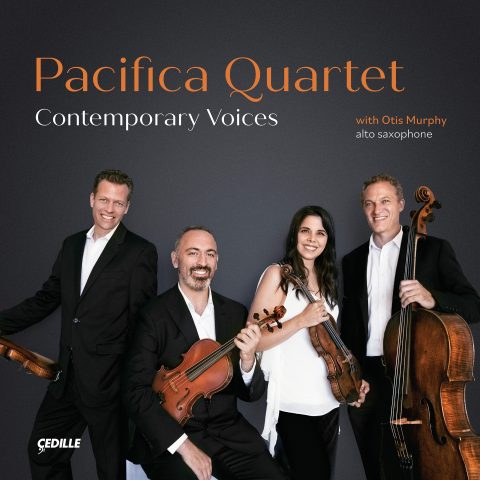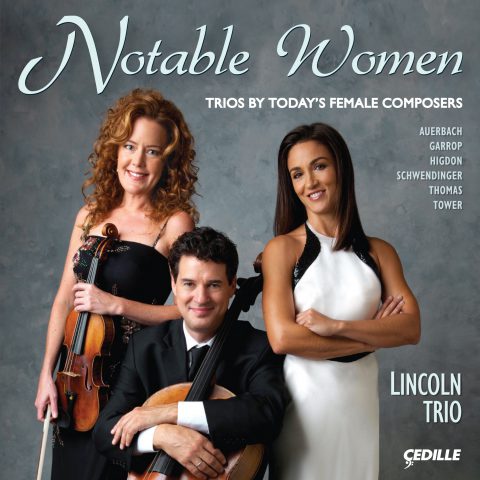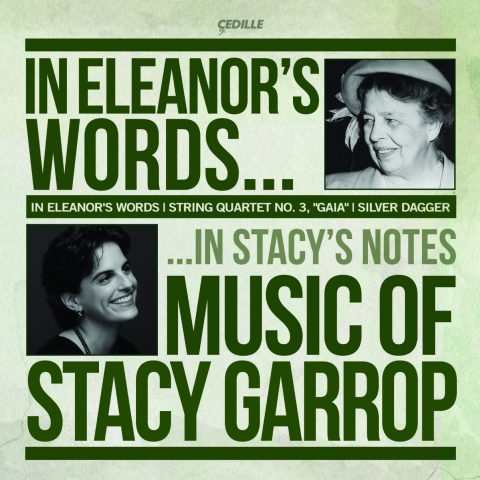Store
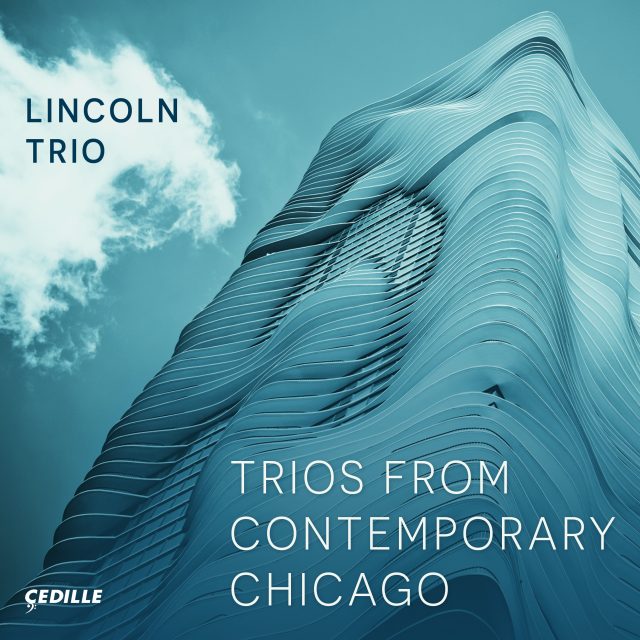
Store
Trios from Contemporary Chicago
Shawn E. Okpebholo, Augusta Read Thomas, Shulamit Ran, Stacy Garrop, Mischa Zupko
The twice-Grammy-nominated, Billboard-charting Lincoln Trio — violinist Desirée Ruhstrat, cellist David Cunliffe, and pianist Marta Aznavoorian — surveys works by five of Chicago’s most highly lauded contemporary composers on an album that features three world-premiere recordings. The Lincoln Trio’s hometown heroes in this project are Shawn E. Okpebholo, Augusta Read Thomas, Shulamit Ran, Mischa Zupko, and Stacy Garrop.
Okpebholo’s music has been described as “devastatingly beautiful” and “fresh and new and fearless” (Washington Post). His three-movement city beautiful, a world-premiere recording, evokes the distinctive Chicago architecture of Jeanne Gang’s wavy, water-inspired Aqua skyscraper; Frank Lloyd Wright’s Prairie School masterpiece, the Frederick C. Robie House; and Daniel Burnham’s Beaux-Arts Union Station.
Recipient of many awards and honors, Augusta Read Thomas is “a true virtuoso composer” (The New Yorker). Her vibrant, multicolored …a circle around the sun… gives each instrument, by turns, a “starring” role in the center of a compact musical solar system.
In addition to receiving the Pulitzer Prize in 1991, Ran has received almost every major honor a U.S. composer can earn. Her Soliloquy, depicting unrequited love, is based on a musical fragment from her first opera, Between Two Worlds (The Dybbuk), with the violin serving as its emotional center.
Zupko’s music has earned kudos from The New York Times, Classical Voice North America, the Chicago Tribune, and other major publications and has been championed, commissioned, and premiered by leading U.S. orchestras and chamber groups. His celebratory Fanfare 80, a world-premiere recording, opens with the hallmarks of a classic fanfare, with “antiphonal volleys” among the instruments and occasional “dance-like” passages from the piano.
“One of Chicago’s most keenly sensitive composers” (Chicago Tribune), Garrop is also among the busiest. Recent com-missions include works for The Crossing, Grant Park Orchestra, and St. Louis Symphony. Her Sanctuary, another world- premiere recording, is a deeply personal tribute to her late father. The music evokes a child’s lonely search for memories of a lost parent, followed by the joy and solemnity of a father-daughter reunion.
Cover Photo by Wayne Cable
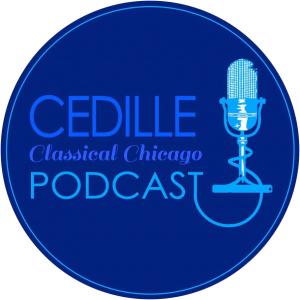 Listen to Jim Ginsburg’s interview with
Listen to Jim Ginsburg’s interview with
Lincoln Trio cellist David Cunliffe
on Cedille’s Classical Chicago Podcast
Preview Excerpts
SHAWN E. OKPEBHOLO
city beautiful
AUGUSTA READ THOMAS
…a circle around the sun…
SHULAMIT RAN
MISCHA ZUPKO
STACY GARROP
Sanctuary
Artists
Program Notes
Download Album BookletTrios From Contemporary Chicago
Notes by the composers
city beautiful | Shawn E. Okpebholo
The City Beautiful movement of the late 19th century, so formative for Chicago, was a philosophy aimed at beautifying world cities, believing that it would, in part, stimulate human flourishing, quality of life, and civic integrity. city beautiful is a triptych that celebrates Chicago’s matchless architecture and an artistic salute to three Chicago architects, their styles and, in each case, a related structure.
The first movement, aqua, is a musical depiction of Aqua Tower, an 82-story downtown skyscraper designed by Jeanne Gang, an imaginative architect who also holds the record for the two tallest buildings designed by women. This modern structure, completed in 2009, is irregular, primarily concrete, graceful, and aesthetically evokes water. These attributes provide the musical foundation of this movement.
It is impossible to explore Chicago architecture and not reference the artistry of Frank Lloyd Wright. The second movement, prairie, is my musical interpretation of his unique contribution to the Prairie School architecture style. This movement is a chaconne that I associate with the Frederick C. Robie House in the Chicago neighborhood of Hyde Park, one of Wright’s most iconic Prairie-style designs. To me, this structure is about space, symmetry, simple complexity, and style.
The last movement is named after architect Daniel Burnham, a staple of the Beaux-Arts architecture movement. Burnham designed Chicago’s Union Station, a monumental structure that is an amalgam of neoclassicism and modernism. This movement is my artistic expression of those styles propelled by the century-old hustle and bustle that still, to this day, fills the halls of Union Station.
—Shawn E. Okpebholo
Special thanks to Alexandra C. Nichols, who commissioned city beautiful.
…a circle around the sun… | Augusta Read Thomas
…a circle around the sun… was commissioned in 2000 by The Children’s Memorial Foundation in honor of George D. Kennedy for the Amelia Piano Trio. The work received its premiere performance at a private party celebrating Mr. Kennedy in thanks for his generous contributions to and support of Children’s Hospital of Chicago. The very short work is in two sections, slow then fast, and is multi-colored and vibrant in its harmonic fields and instrumental colors. The work starts with the note G in reference to the first letter of Mr. Kennedy’s name, George. That note is used as the axis point around which other notes and sound actions gravitate.
The resonance, warmth, and role of each instrument are clearly defined. Generally, the piano provides most of the attacks, and the string instruments the warm reverberation. The piano is often the protagonist, the center or musical sun, around which the other two instruments orbit as though in a circle. At special moments, however, each string player serves as a protagonist as well as a fulcrum point on and around which the other players’ musical force-fields rotate, bloom, and proliferate.
—Augusta Read Thomas
Soliloquy | Shulamit Ran
Soliloquy, a single-movement work of approximately eight minutes, owes its inspiration in no small part to the experience of being preoccupied over a period of some three years (between 1995 and 1997) with the creation of my first opera, Between Two Worlds (The Dybbuk), based on S. Ansky’s famous Yiddish play by the same name. In 1995, I composed Yearning for violin and string orchestra for violinist Edna Michell, based on a fragment of the opera, then in progress. Soliloquy is a recasting of this work, adapted in 1997 for the Peabody Trio.
My compositional point of departure was a musical line that begins the opening soliloquy of Khonnon, the play’s (and opera’s) protagonist, where his yearning and desire for his
beloved Leya is first revealed. In The Dybbuk, Khonnon dies when it becomes clear that his love is to remain unrequited. Whereas most similar tales would end right there, Khonnon’s death is only the first step in the journey to fulfill the great longing of the doomed would-be lovers.
While the aforementioned phrase (originally a tenor line, played here on the cello) served as the compositional “trigger” for me in Soliloquy, its placement in this work differs from its operatic analog in that it appears as the answer (consequent phrase) to Soliloquy’s principal theme, a newly-composed violin line. This legato line is loosely based on a whole-tone configuration, a different melodic permutation of which is associated throughout the opera with Khonnon’s desire, and which I have come to think of as the opera’s “lust motif.”
The title refers not only to Khonnon’s soliloquy, but also to the fact that, although written for a standard piano trio combination, it is, in fact, the violin that serves as the carrier, the “voice” of the piece and its emotional center.
—Shulamit Ran
Fanfare 80 | Mischa Zupko
I wrote Fanfare 80 to celebrate the Music Institute of Chicago’s 80 years of service to aspiring musicians in the Chicagoland area. The work’s opening has all the hallmarks of a classic fanfare, including repeated-note gestures and antiphonal volleys among the instruments. However, it is set in a jaunty alternation of 7- and 11-beat measures that give it an off-kilter feel, interrupted at several points by a savage dance-like element introduced in the piano. This alternation of the celebratory and the savage, like the personas of Jeckle and Hyde, persist until they merge about halfway through the piece into what could only be characterized as a savage celebration.
This music continues to rise in intensity, and at its apex, the opening gesture returns unexpectedly before a final flurry to the finish. Commissioned to be premiered by the resident ensembles at the Music Institute of Chicago, Fanfare 80 exists as an orchestral work and in versions for woodwind quintet and piano trio. I made the woodwind quintet version for Quintet Attacca and the trio version for the Lincoln Trio.
—Mischa Zupko
Sanctuary | Stacy Garrop
In 2011, my mother, Barbara Garrop, commissioned me to write a piano trio in memory of Norman Garrop, my father, who passed away about 30 years ago. When I started brainstorming about topics for the piece, I found it difficult to recall many moments of my early life involving my father. Too many years had passed, and the memories that I could summon were of a child looking up to her father, not an adult relating to an equal. However, while collecting stories of my father from various family members, along with discovering a number of objects that had once belonged to him and that I had stored away in boxes decades ago, I began to realize that this piece wasn’t so much about my father as it was about my re-discovering the man that he was: a loving husband and dad who cared deeply about his family and his passions (which included bike riding, collecting coins, strumming our guitar, playing baseball, watching football games, entertaining people, helping to run local theater and puppet productions, and carving objects out of wood); an accountant who dreamed of a better future; a treasurer of our local synagogue; an early advocate for computers (we owned an Apple II+); and a prankster with a great sense of
humor. Ultimately, I decided to tell musically the story of my search for these memories.
In the first movement (“Without”), a child calls out in a singsong voice, searching for her lost parent. This search intensifies over the course of the movement through a series of themes, including a “stepping” motif in which a two-note progression steadily climbs higher, a pseudo-Jewish folksong, and a passionate “longing” theme. The child’s search becomes increasingly intense throughout the movement, calling out fervently and repeatedly to the parent; the movement ends in a moment of great tension and uncertainty. The second movement (“Within”) opens quietly with the lost parent finally answering, represented by a solo cello; the child, now personified by the violin, has found the parent within the sanctuary of her own heart. This movement highlights the joy and solemnity of this beautiful discovery.
—Stacy Garrop
Album Details
PRODUCER James Ginsburg
ENGINEER Bill Maylone
RECORDED
July 26–28, 2021
Reva and David Logan Center for the Arts at the University of Chicago (Garrop, Ran, Thomas)
March 2–3, 2022
Nichols Hall at the Music Institute of Chicago (Okpebholo, Zupko)
GRAPHIC DESIGN
Madeleine Richter
COVER PHOTO
Exterior of Aqua Building
©2021 Wayne Cable
PUBLISHERS
…a circle around the sun…
© 2020 G. Schirmer Inc.
city beautiful
© 2021 Yellow Einstein Press
Fanfare 80
© 2010 Sarché Publishing
Soliloquy
© 2003 Theodore Presser Co.
Sanctuary
© 2016 Theodore Presser Co.
2022 © CEDILLE RECORDS
CDR 90000 211
